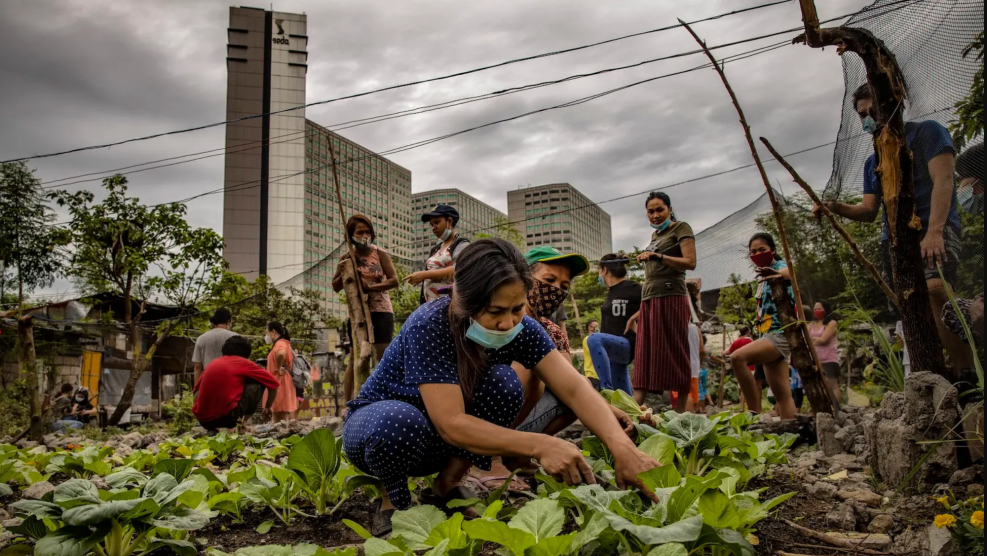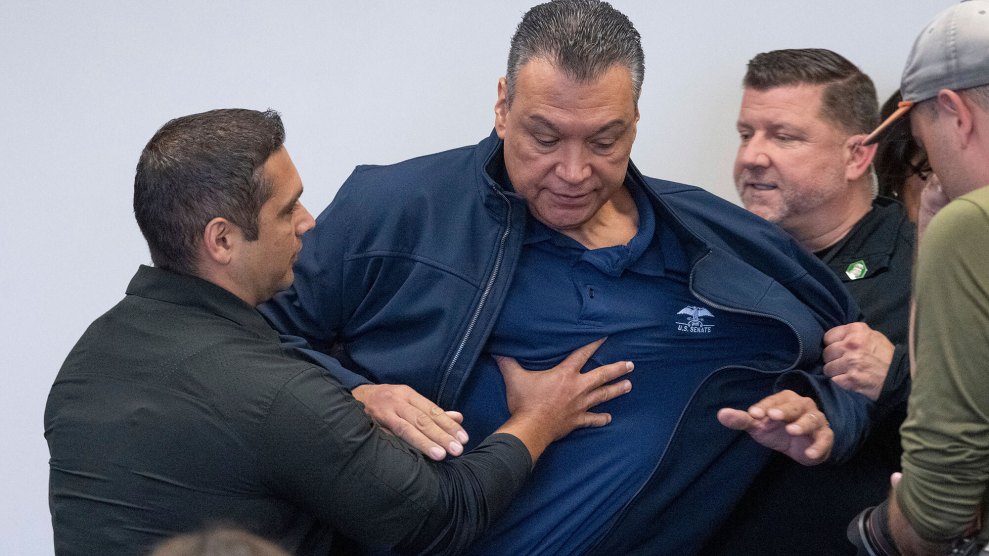
The week following Cyclone Nargis’ devastating landfall on the Burmese mainland, the world watched with horror while the country’s military junta refused to grant foreign relief workers access to the hardest-hit areas, claiming that it had the situation well in hand. It did not, and in the days after the storm, thousands of survivors were left destitute as aid supplies remained lashed to their pallets in distant airplane hangers and on the decks of ships offshore. Only last week did the Burmese government begin to allow deliveries of foreign aid. Already, the U.S. has contributed over 100 tons of supplies, such as bottled water, crackers, powdered milk, plastic sheeting, hygiene kits, and mosquito nets—all of it delivered by the US military. Noncombat missions like this—”stability operations,” in military jargon—have in the last few years become a top priority for the Pentagon, which has come to understand the benefits of preventing volatile states from slipping into chaos and thus presenting a potential base of operations for terrorists. But the US military’s newfound interest in relief and development work has some nongovernmental organizations (NGOs) questioning the Pentagon’s motives and worrying that its involvement might undermine their own.
The possible scenarios are not difficult to anticipate. Aid workers in the field operating in close proximity to US troops might easily suffer the consequences of guilt by association, particularly if those troops, in between combat missions, have also been engaged in relief work. And when the difference between aid worker and soldier blurs—a fragile distinction to begin with, in some parts of the world—humanitarian operations are put at risk. Take, for example, the October 2005 earthquakes in Pakistan. NGOs worked closely with the US military to ferry supplies to remote areas in the mountains of Kashmir. But in the midst of the operation, American jets launched an attack on suspected insurgent hideouts in another part of the country, accidentally killing innocent civilians. Though no revenge attacks are known to have resulted in this particular case, incidents like this cause aid workers to reconsider their security, weighing whether to travel with armed escorts and live in guarded compounds, precautions that would hamper their ability to operate and, in some cases, could force them to abandon their work. In Burma, there have been no similar problems, as the US military is not engaged in military operations in the region. But in an era of growing humanitarian crises, the issue of military-civilian separation has caused NGO do-gooders to fret about potential conflicts in the near future.
The elevation of noncombat missions to coequal status with war fighting was codified in a document issued by Donald Rumsfeld’s Pentagon in November 2005. Department of Defense Directive 3000.05—titled “Military Support for Stability, Security, Transition, and Reconstruction (SSTR) Operations”—describes such work as “a core US military mission” that “shall be given priority comparable to combat operations.” Having experienced firsthand in Afghanistan and, later, in postinvasion Iraq the threat posed by failed states, the Pentagon’s long-term goal, according to the directive, “is to help develop indigenous capacity for securing essential services, a viable market economy, rule of law, democratic institutions, and a robust civil society” and “to help establish order that advances US interests and values.” In other words, high-tech weapons alone will not win the war on terrorism. As Defense Secretary Robert Gates said in a speech last November, “We must focus our energies beyond the guns and steel of the military.”
From a tactical perspective, the directive makes sense. After all, the US military commands the most far-ranging air and sealift resources of any organization on earth. “We have the capability, we have the capacity, and we have the cash,” says Roger Carstens, a former Army Special Forces officer and now a senior fellow at the Center for New American Security in Washington, DC. “You put all the NGOs together, and they can’t even come close to what an aircraft carrier battle group can deliver in a few sorties.” Moreover, says Carsten, the US military “has a strong history of showing up to do good work, usually in a tough environment that’s very austere, where logistics are important, and where maybe even the host nation isn’t too thrilled to have us there,” as in the case of Burma.
Indeed, the US military has long conducted relief missions in the wake of natural disasters, often working alongside NGOs—as in Indonesia, for example, after the tsunami. The move to formalize the importance of such missions by issuing a directive was meant to ensure that the Pentagon does not soon forget the lessons of Iraq and Afghanistan, where expensive weapons systems failed to crush loosely organized insurgents, let alone win the “hearts and minds” of local populations. The feeling, says Carsten, is that “if we don’t lock this down, then there’s every chance that, by the year 2013, we’ll start getting back to conventional war mindsets.” And within the military, doctrine matters. “When you write something in doctrine, even your most knuckle-dragging military ape is going to read this and say, ‘This is real; I need to learn how to execute this.'”
On one hand, NGO officials are grateful for the US military response to disasters. But the struggle to be seen as independent players, unaffiliated with any government, is crucial to NGOs’ ability to operate. When the US military is in the area doing similar types of relief work, it can confuse local people into equating the two. “Part of [what the military does] seems to overlap with what we in the humanitarian community do,” says Michael O’Neill, the security director for Save the Children. “That’s where it looks like the same thing. Building a school, for instance. But humanitarian work is based on need and need alone. It’s valued for its own purposes. It’s not a tactic for gathering intelligence, for establishing networks, for surveillance, or anything like that.” When the military undertakes what appears to be humanitarian or development work in places like Iraq or Afghanistan, “decisions are being made based on tactical considerations of whether this area has a strategic importance with regard to broader military activities. That is not humanitarian.”
In an effort to resolve this conflict of interest, over the past several years, representatives of various NGOs, the US Departments of Defense and State, and the US Agency for International Development (USAID, the federal agency primarily responsible for coordinating humanitarian relief) have been holding discussions as part of a working group facilitated by the Washington, DC-based United States Institute of Peace, a congressionally funded organization that focuses on resolving international conflicts. Last summer, the group released a nonbinding document outlining how NGOs and the US military should relate to one another when working together in the field. It attempts to create zones of influence, laying out guidelines on issues like the carrying of weapons, wearing of uniforms, and use of logos on vehicles. It also states explicitly that the US military will not refer to NGOs as “force multipliers” or “partners,” as Colin Powell did in a 2001 speech in Washington, DC. (“Just as surely as our diplomats and military, American NGOs…are out there serving and sacrificing on the front lines of freedom,” Powell said, to a cringing audience of humanitarian professionals. “NGOs are such a force multiplier for us, such an important part of our combat team.”)
Despite good-faith efforts to insulate NGOs from being labeled as American agents, problems persist. The fact is that a large part of their funding comes from the US government in the form of grants. Andrew Natsios, a former USAID administrator and one-time US special envoy to Sudan, asserted in a 2003 speech to a gathering of humanitarian organizations that any relief group receiving American funding is “an arm of the US government.” Such views have not disappeared in intervening years; if anything, they may have become more prevalent, as the US government has grown more focused on relief work as a tactic in the war on terrorism. “This is the dilemma we’re finding ourselves in with regard to the DOD,” says O’Neill. “With the funding coming from the DOD, we have to make the decision constantly: Do we accept the money on these terms? That’s a tough decision. I can tell you, every US NGO is having this dialogue internally, because this is the wave of the future.”
Photo: Local villagers receive humanitarian aid from the Bagram Provincial Reconstruction Team in the village of Nijrab in the Kapisa Province of Afghanistan Jan. 14, 2008 (U.S. Army photo by Staff Sgt. Tyffani L. Davis). Photo obtained from flickr user soldiersmediacenter and used under a Creative Commons license.
















